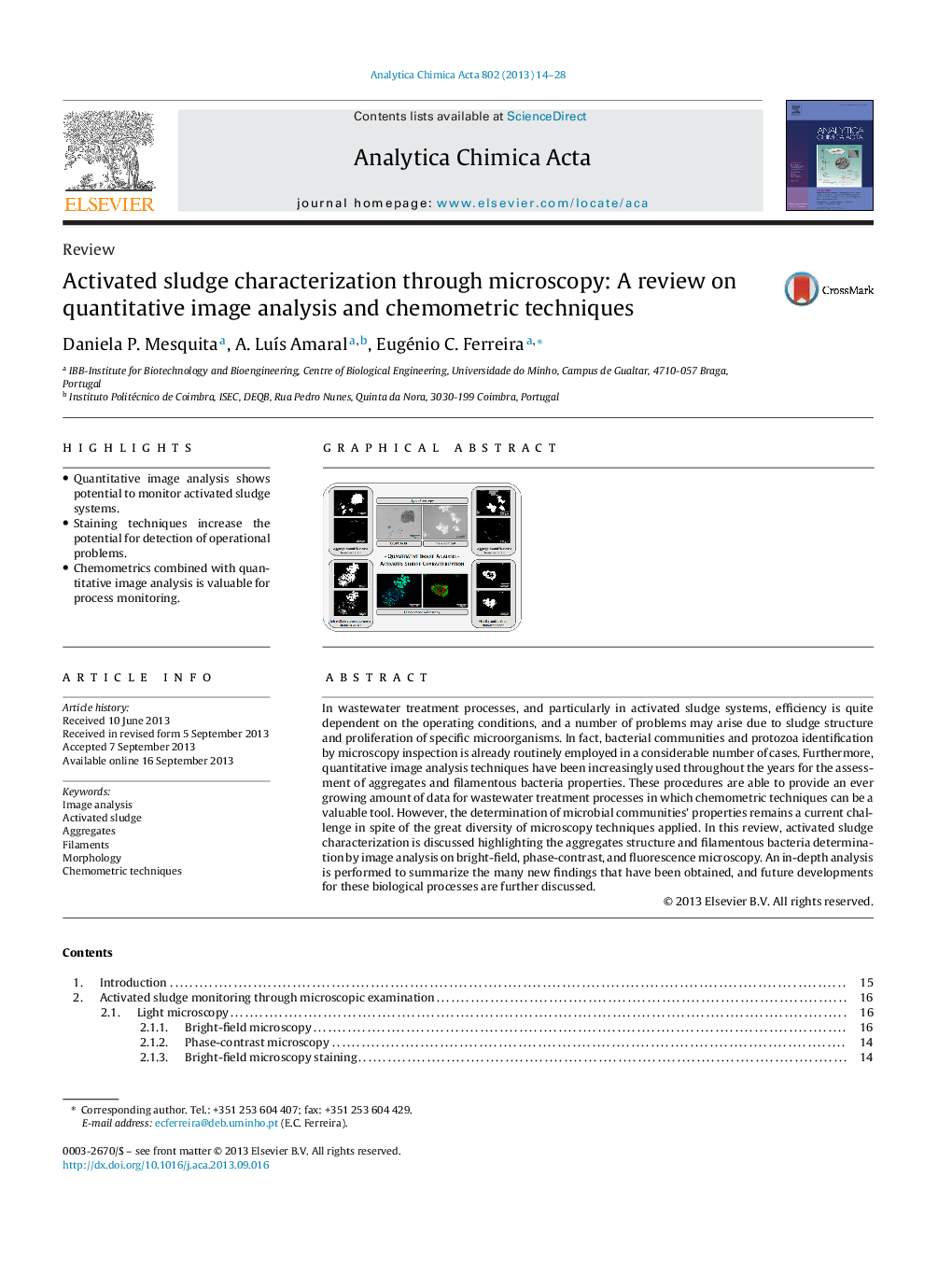| Article ID | Journal | Published Year | Pages | File Type |
|---|---|---|---|---|
| 1165314 | Analytica Chimica Acta | 2013 | 15 Pages |
•Quantitative image analysis shows potential to monitor activated sludge systems.•Staining techniques increase the potential for detection of operational problems.•Chemometrics combined with quantitative image analysis is valuable for process monitoring.
In wastewater treatment processes, and particularly in activated sludge systems, efficiency is quite dependent on the operating conditions, and a number of problems may arise due to sludge structure and proliferation of specific microorganisms. In fact, bacterial communities and protozoa identification by microscopy inspection is already routinely employed in a considerable number of cases. Furthermore, quantitative image analysis techniques have been increasingly used throughout the years for the assessment of aggregates and filamentous bacteria properties. These procedures are able to provide an ever growing amount of data for wastewater treatment processes in which chemometric techniques can be a valuable tool. However, the determination of microbial communities’ properties remains a current challenge in spite of the great diversity of microscopy techniques applied. In this review, activated sludge characterization is discussed highlighting the aggregates structure and filamentous bacteria determination by image analysis on bright-field, phase-contrast, and fluorescence microscopy. An in-depth analysis is performed to summarize the many new findings that have been obtained, and future developments for these biological processes are further discussed.
Graphical abstractFigure optionsDownload full-size imageDownload as PowerPoint slide
